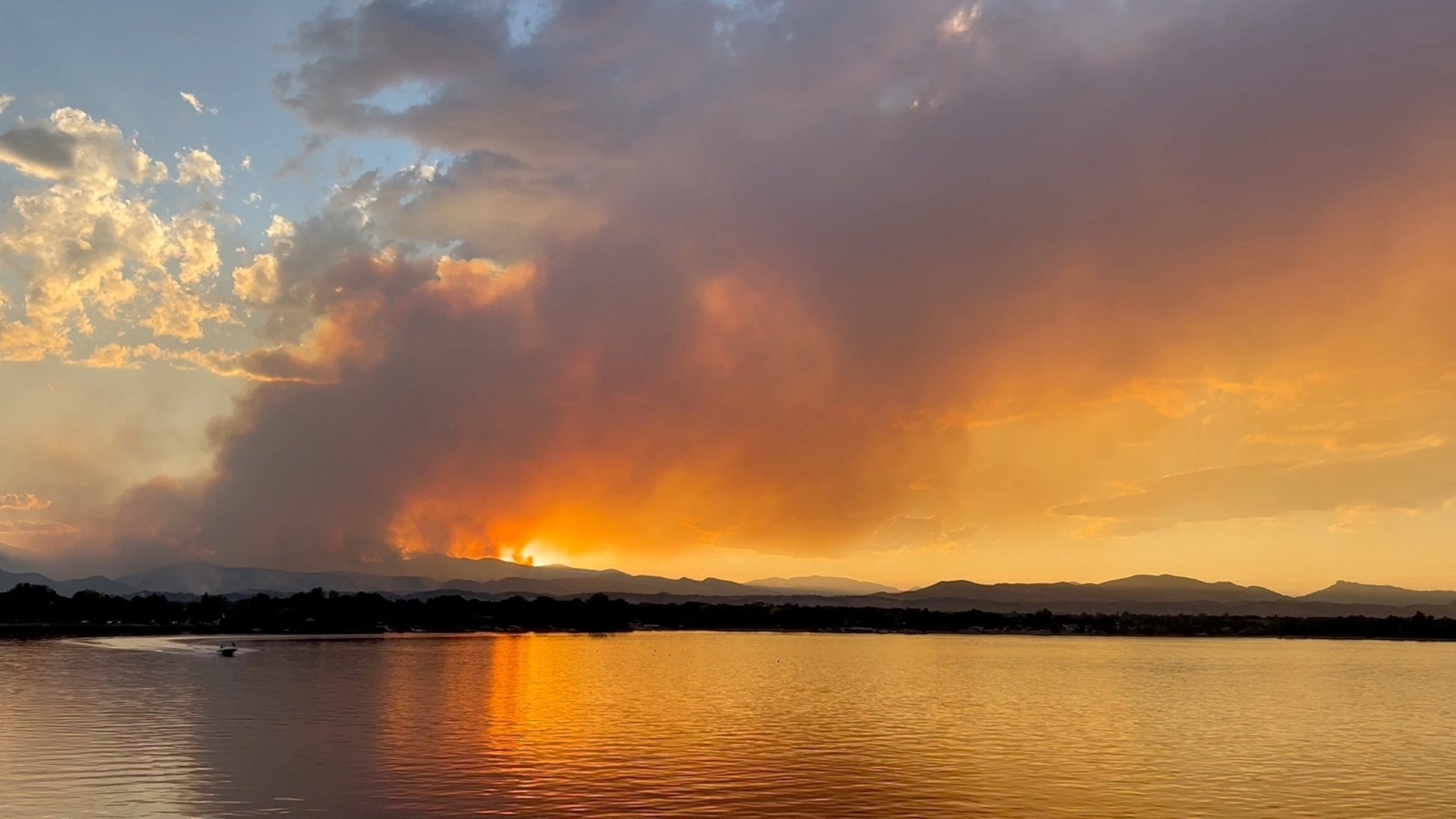A wildfire that started Tuesday in Colorado has killed a person in their home, while California firefighters battling the largest active wildland blaze in the nation made significant progress on containing it but still have a long way to go before it is extinguished, authorities said.
As the Park Fire in Northern California has grown into the fifth largest wildfire in California history, firefighters were dealt a new challenge when another blaze erupted in Southern California and quickly blew up into a major conflagration, prompting mass evacuations, officials said.
The Stone Canyon Fire in Colorado
During a news conference Wednesday, Boulder County, Colorado, Sheriff Curtis Johnson said the remains of a person were recovered from a home in the area of the Stone Canyon Fire burning about 20 miles north of Boulder. But Johnson released few details about the circumstances of the death.
The Stone Canyon Fire burning west of Rabbit Mountain and the town of Lyons was first reported around 2 p.m. on Tuesday, Johnson said. By Wednesday morning, the fire had grown to 1,320 acres and was 0% contained, according to the Boulder Office of Disaster Management.
The fire prompted evacuations in the fire zone, authorities said. At least five structures have been destroyed, according to authorities.
The Alexander Mountain Fire in Colorado
Colorado firefighters were also trying to get the upper hand on the Alexander Mountain Fire, which was first reported around 10:30 a.m. local time on Monday, according to the Larimer County Sheriff’s Office. The fire burning in a remote mountainous area near Roosevelt National Park grew to 6,781 acres by Wednesday afternoon, fire officials said during a news conference.
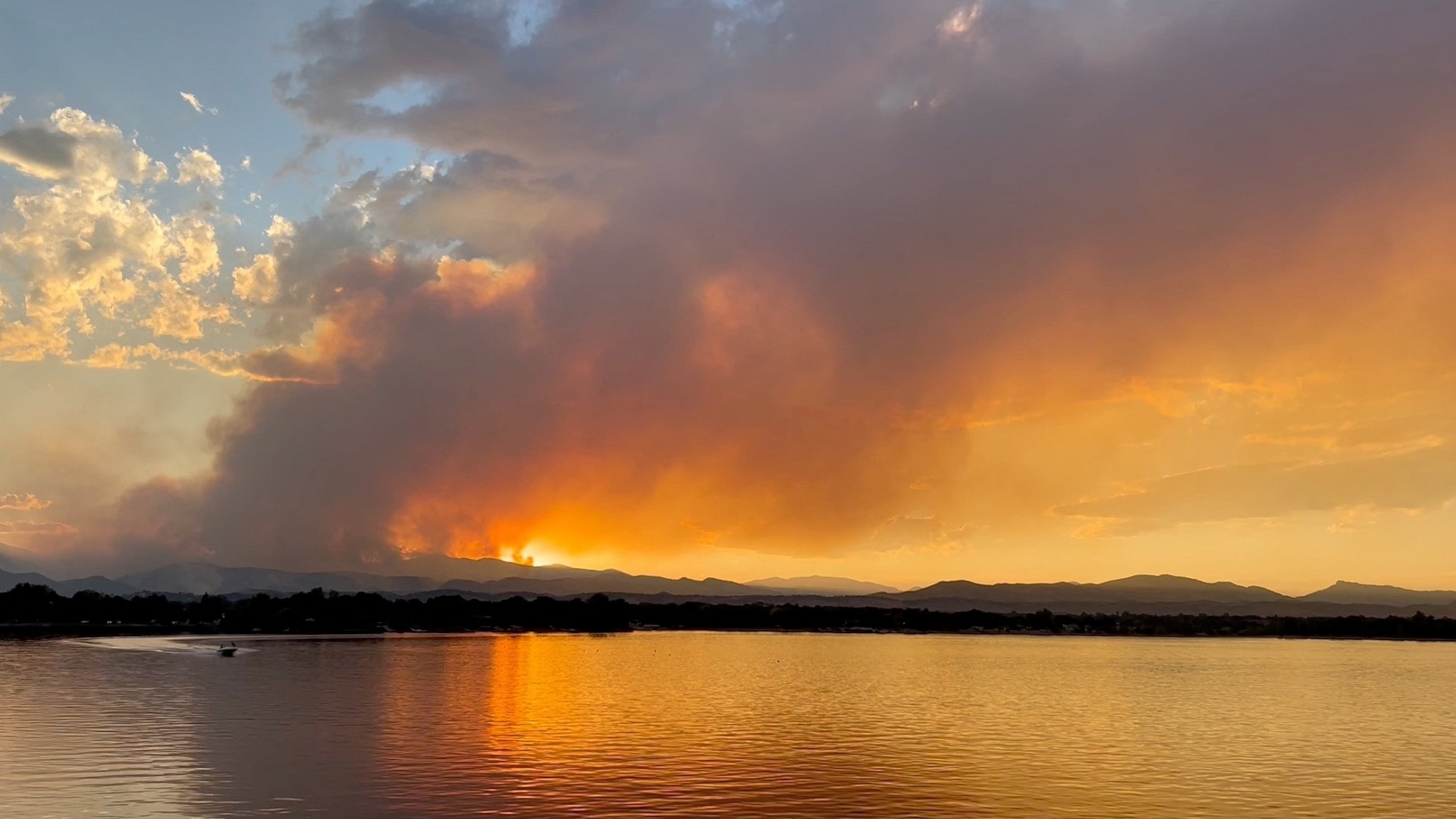
Smoke rises from the Alexander Mountain fire in Loveland, Colorado, U.S., July 30, 2024, in this screengrab obtained from a social media video.
Mary Carraher via Reuters
The fire was 0% contained as of Wednesday afternoon, according to the sheriff’s office.
The Alexander Mountain Fire, which also prompted evacuations, is about eight miles from the Stone Canyon Fire, officials said.
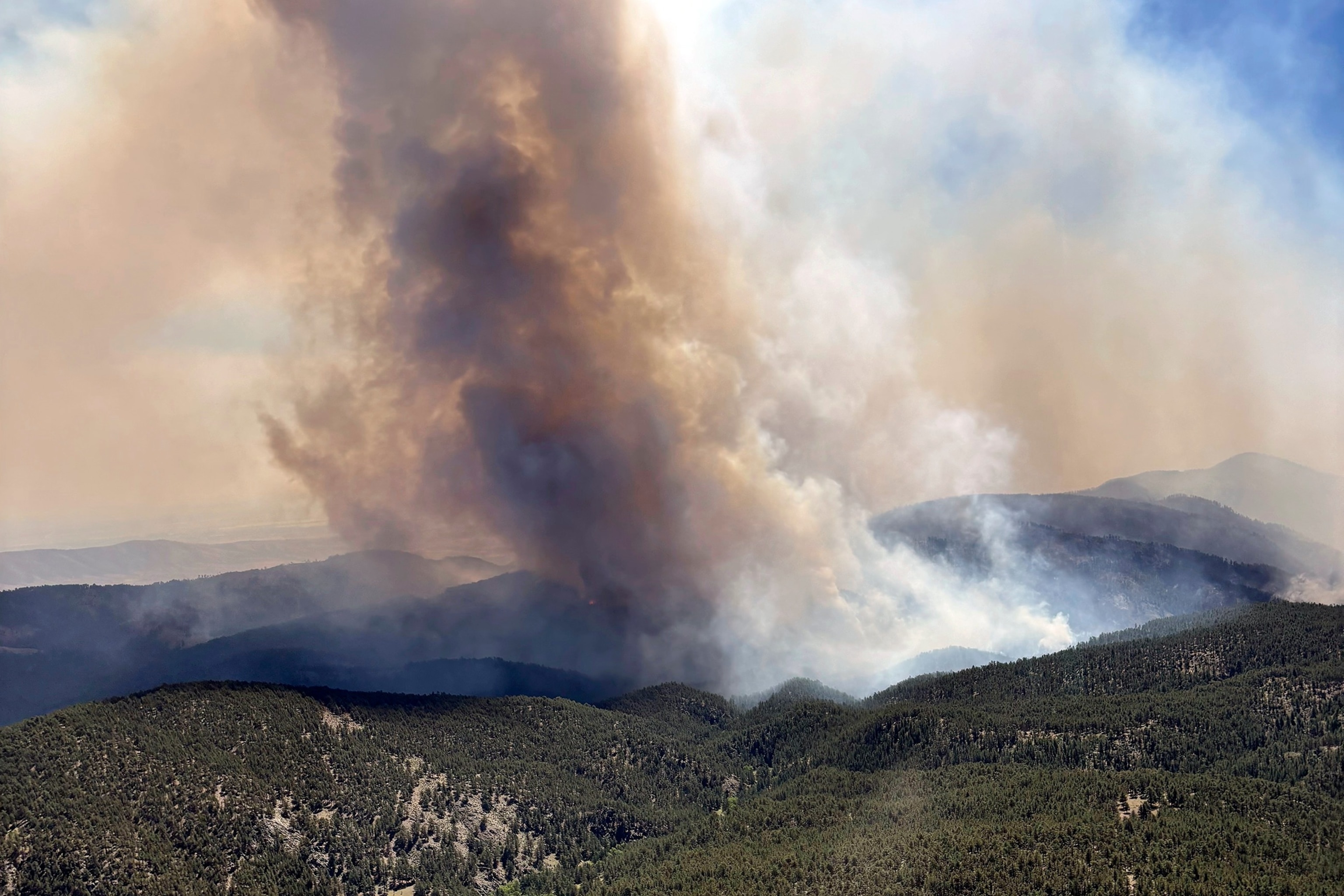
This image provided by the USDA Forest Service shows the Alexander Mountain Fire near Loveland, Colo., Tuesday, July 30, 2024.
Jason Sieg/USDA Forest Service via AP
“The good news for us is that we were able to grab resources from Larimer County. As soon as our fire kicked off, the Larimer sheriff was in contact with me, offered to send some of those air resources to this fire, tried to help us get it under control,” Johnson said. “So within an hour, we had a lot more support than we might on a normal initial fire because of the fire burning north of us.”
The Park Fire in Northern California
Firefighters battling the Park Fire in Northern California, the largest active fire in the nation, made significant progress overnight, increasing containment lines on the blaze from 12% on Tuesday to 18% on Wednesday, according to the California Department of Forestry and Fire Protection (Cal Fire).
As of Wednesday, the Park Fire, which officials said was deliberately started on July 24 and spread through Butte, Plumas, Shasta and Tehama counties in Northern California, had grown to 389,791 acres — which sent it leapfrogging over the 2020 Creek Fire, which tore through Central California’s Sierra National Forest, to become the fifth largest wildfire in state history, officials said.
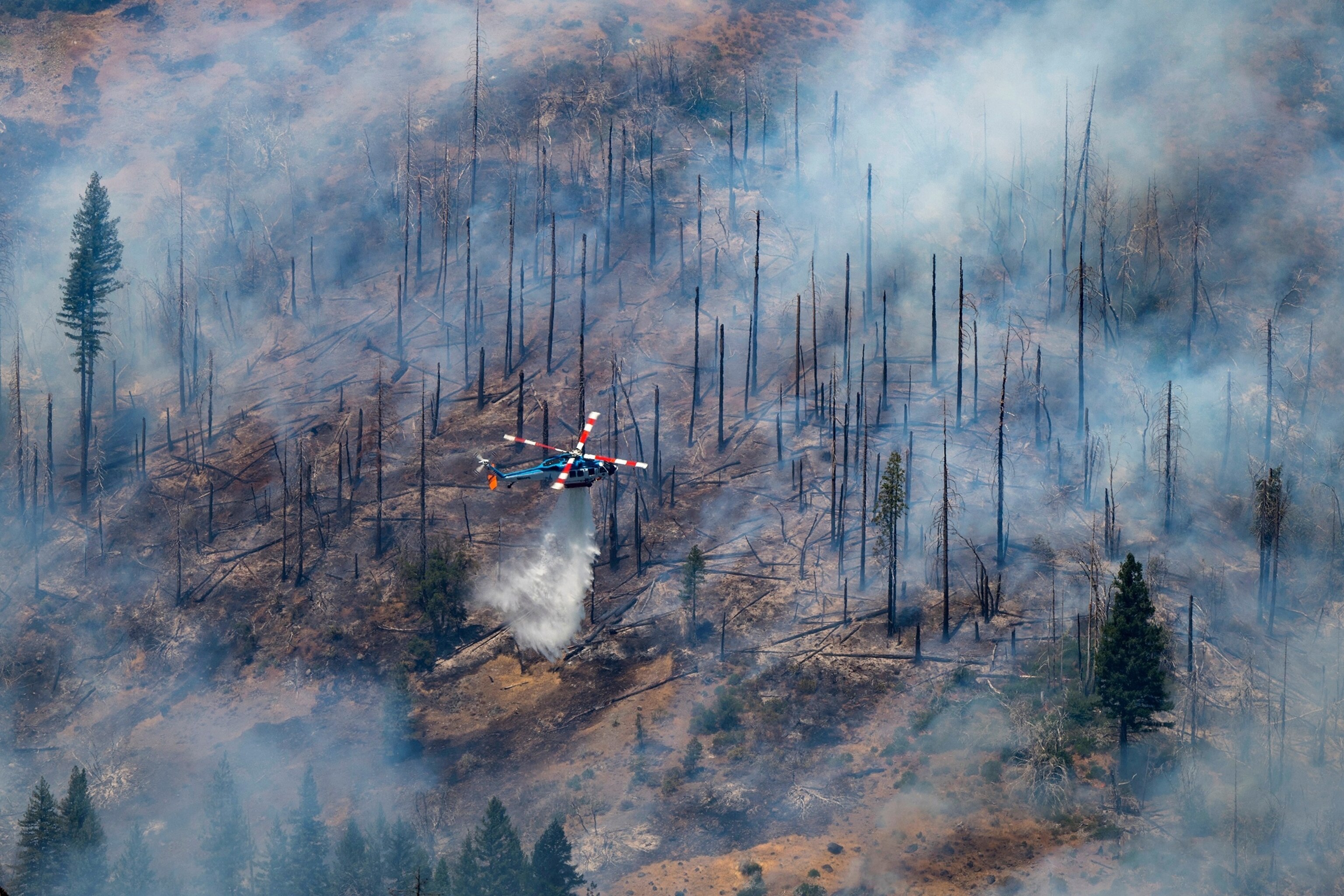
A helicopter drops water on the Park Fire near Butte Meadows, Calif., Tuesday, July 30, 2024.
Nic Coury/AP
The Park Fire has destroyed 361 structures, including homes and commercial property, and damaged another 36 structures in a path of destruction that started in Bidwell Park near the city of Chico and spread about 90 miles north to the Lassen National Forest, according to Cal Fire.
More than 5,800 firefighters are fighting the Park Fire from the air and ground. At least 3,800 people have been forced to evacuate their homes, according to Cal Fire.
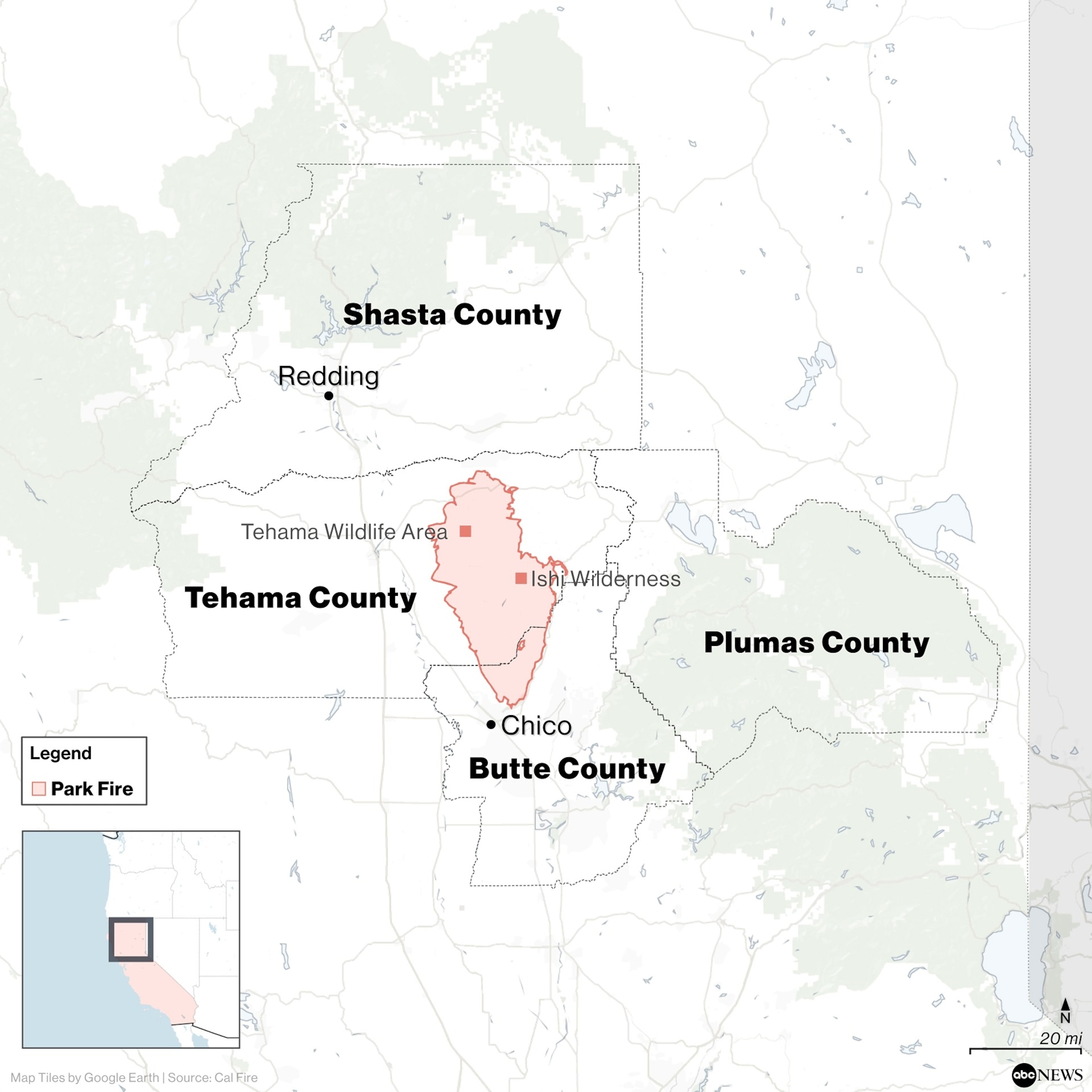
Park Fire July 29th
ABC News, Cal Fire
Meanwhile, the suspect arrested on suspicion of starting the Park Fire was formally arraigned on Monday. Ronnie Dean Stout II, 42, of Chico, was charged with felony arson with an enhancement of special circumstances due to prior convictions. His arraignment was continued to Thursday, when he is expected to enter a plea. Stout was ordered to be held without bail.
Stout was allegedly spotted just before 3 p.m. PT on Wednesday pushing a burning car down a gully called “Alligator Hole” in Bidwell Park, near Chico, sparking the Park Fire, prosecutors said.
Weather conditions in the Chico area will be heating up in the coming days. The high temperatures in the area are forecast to climb into the upper 90s on Wednesday and reach triple digits by Thursday and into the weekend, according to the National Weather Service.
The Nixon Fire in Southern California
California firefighters were confronting 20 active blazes on Wednesday, including seven that started on Monday and Tuesday. Among the biggest new fires is the Nixon Fire that ignited around 12:30 p.m. local time on Monday off Richard Nixon Boulevard in Riverside County, northeast of the town of Aguanga, according to Cal Fire.
As of Wednesday morning, the Nixon Fire had grown to 4,941 acres and was 5% contained, according to Cal Fire.
At least five structures in the fire zone were damaged or destroyed, but it was unclear if they were homes. More than 900 structures were being threatened by the fire, according to Cal Fire.
The Riverside County Sheriff’s Office issued mandatory evacuation orders for residents in the area.
There were no immediate reports of injuries.
More than 700 fire personnel, including 44 fire engine crews, two helicopter crews and numerous firefighting air tankers, were battling the fire on Wednesday.
Smoke spreading across the Northwest
The fires in the West are spreading smoke across the Northwest.
By Wednesday afternoon, the smoke is expected to remain heavy in the Northern California region, but farther east, it will be pushed south.
Medium to heavy smoke is possible from Salt Lake City to Denver on Wednesday afternoon, while places farther north that have been under heavy smoke for days will finally get a break as they get rainfall and cooler temperatures.
Air quality alerts were issued for Boise, Idaho, and Denver due to the smoky conditions, officials said.
Red flag warnings signaling elevated fire danger were issued for at least Idaho, Wyoming, Utah and Colorado.
As wildfires continue to ravage the western United States, the latest updates show a concerning trend of increasing severity and destruction. In Colorado, one fatality has been reported in a blaze that has been burning for days, while in California, containment efforts are ramping up for a massive fire that has already consumed thousands of acres.
The Colorado wildfire, known as the East Canyon Fire, has been burning near the town of Durango since last week. The fire has grown rapidly due to dry conditions and strong winds, forcing hundreds of residents to evacuate their homes. Tragically, one person has been confirmed dead as a result of the fire, highlighting the dangerous and unpredictable nature of wildfires.
Firefighters in Colorado are working tirelessly to contain the blaze and protect homes and infrastructure in the area. Air tankers and helicopters have been deployed to drop water and fire retardant on the flames, while ground crews are working to establish containment lines. Despite their efforts, the fire continues to spread, fueled by dry vegetation and challenging terrain.
In California, the Caldor Fire has become one of the largest wildfires in the state this year, burning over 200,000 acres in El Dorado County. The fire has forced thousands of residents to evacuate and has destroyed dozens of homes and structures. Containment efforts have been hampered by difficult terrain and erratic winds, but firefighters have made progress in recent days.
Containment of the Caldor Fire now stands at 25%, thanks to the efforts of over 4,000 firefighters who are battling the blaze on the ground and from the air. Fire crews are working around the clock to establish containment lines and protect communities in the path of the fire. Despite the progress, officials warn that the fire is still a significant threat and urge residents to remain vigilant.
As wildfires continue to burn across the western United States, it is crucial for residents in affected areas to stay informed and follow evacuation orders issued by authorities. Climate change is exacerbating wildfire conditions, leading to longer and more intense fire seasons. It is essential for communities to be prepared and take steps to mitigate the risk of wildfires.
The latest updates on the Western wildfires serve as a stark reminder of the ongoing threat posed by these natural disasters. As firefighters continue to battle the blazes, it is important for all of us to support their efforts and take steps to protect ourselves and our communities from the devastating impact of wildfires.
